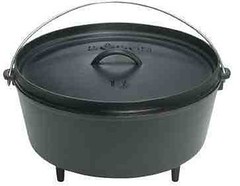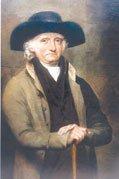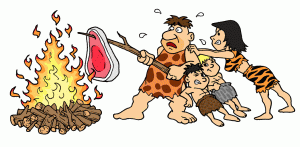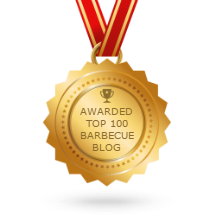Passing the Dutchie!*
 I love using my Dutch oven. It's so versatile, you can almost do anything with it – fry, boil, make stews, cook roasts, casseroles, take it to camp, pop in the oven, even bake in it! I could go on and on. Harnessing a slow-cooking method, meals prepared in Dutch ovens come out with a more sumptuous flavor as the tastes are carefully extracted throughout the cooking process.
I love using my Dutch oven. It's so versatile, you can almost do anything with it – fry, boil, make stews, cook roasts, casseroles, take it to camp, pop in the oven, even bake in it! I could go on and on. Harnessing a slow-cooking method, meals prepared in Dutch ovens come out with a more sumptuous flavor as the tastes are carefully extracted throughout the cooking process.
In one of my previous posts, I shared with you the cast-iron treasure trove I inherited from my mother-in-law. I've been reading a lot about cast-iron cookware and learned that back in the 18th and 19th century, Dutch ovens were so treasured that people included this in their will. A well-cared for Dutch oven can last you centuries so this inspired me to share with you how these wonder pots came about.
 There are various accounts on the Dutch oven's true history but the most popular and documented one is that of Abraham Darby's story. In 1704, Abraham Darby traveled to the Netherlands to study the Dutch method of using dry sand to make cast-iron molds resulting to smooth-surfaced pots. He then returned to England and perfected the process further by experimenting on other types of sand and improving methods.
There are various accounts on the Dutch oven's true history but the most popular and documented one is that of Abraham Darby's story. In 1704, Abraham Darby traveled to the Netherlands to study the Dutch method of using dry sand to make cast-iron molds resulting to smooth-surfaced pots. He then returned to England and perfected the process further by experimenting on other types of sand and improving methods.
Darby found that using a better type of molding sand and baking the molds improved the smoothness of pots he created. He patented this method on 1708 and began distributing these cast-iron pots across Britain & her American colonies. Thus, it is concluded that the term “Dutch oven” comes from Darby's observation of the Dutch method of creating the now-famous cast-iron cookware.
Dutch traders who peddled their wares to towns they have traveled to is also thought to be the origin of Dutch ovens. Another assumption would be that of the Dutch settlers in Pennsylvania who used cast-iron pots and kettles.
The Dutch oven, being around for 300 years or so, has evolved into many different forms. Innovators, such as Lodge Manufacturing, have created different designs for every purpose. There are those with flat bottoms and those with legs (what they call camp Dutch ovens). The legs help the Dutch oven's stability when cooking over coals which is most common for outdoor cooking and camping. We also have a variety of iron thickness, depth, leg length/thickness, handle options, lid design, flanges, etc.
According to Lodge Manufacturing's website, a lot of the Dutch ovens manufactured over 100 years ago are still put to good use to this day. This just goes to show how reliable your Dutch oven could be as it can stand years – decades – of wear and tear. The Dutch Oven Wikipedia entry also states, “a well-used Dutch oven that has been seasoned and cared for could even be as non-stick as the best Teflon or other non-stick cookware” (learn more about proper seasoning and care of your Dutch oven by visiting the Dutch Oven Wikipedia entry). This would truly be a wise investment for anyone, I would say.
I hope you enjoyed learning more about Dutch ovens today and I'll post more recipes to give your Dutch oven more outdoor cooking mileage. Thanks for reading!
Sources: http://en.wikipedia.org/wiki/Dutch_oven
http://www.lodgemfg.com/lodge-history.asp
*A more unfamiliar term for Dutch ovens is Dutchie in some Jamaican cultures, as referred to in the famous ‘Pass The Dutchie‘ song by Musical Youth. (Wikipedia)

